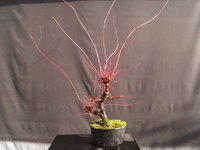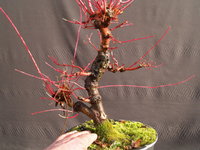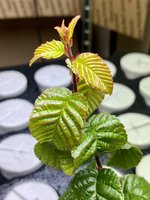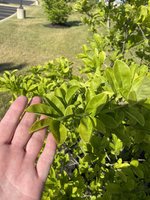Shibui
Imperial Masterpiece
We often see posts asking about named cultivars grown from seed which promptly get replies (rightly) stating that cultivars can only be propagated asexually. Any seedling is the result of sexual propagation so has new combinations of genes and is therefore a completely new cultivar.
As illustration I germinated seed from Sangu Kaku (Coral Bark) last spring. Here's the results:
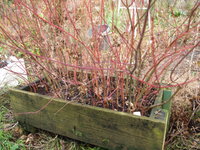
A box of Japanese maple seedlings.
It is true that some have similar red bark to the Sangu Kaku parent but when I look closer there's actually a range of shades. There's also a range of different growth habits. Some are tall and straight while others are weaker or have short internodes. Even the seedlings with red bark are NOT Sangu Kaku because each and every one has a new, different combination of genes.
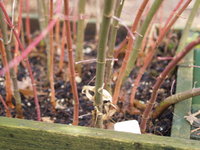
For those who may be interested I estimated around 2/3 of the seedlings had red bark and was surprised when I unpotted, sorted and actually counted them. 64 have bark in various shades of red. 29 have greenish bark so just under half have missed out on the parent's red bark genes.
As I separated the seedlings I noted that the green bark trees generally have much stronger roots and took more effort to separate from the clump.
Of the 64 red stems 22 are very small, weak or spindly. While some of that may be attributed to crowding or other environmental conditions, many of those smaller seedlings will be genetically programmed for smaller size.
The point of this post is to reinforce that seedlings must not be given an existing cultivar name because even if they look similar there will be some different traits that make each seedling a unique individual.
That does not make any of these seedlings less valuable as bonsai. Any or all of them could be grown on and trained into great bonsai and many of these will be. I just won't be calling any of them Sangu Kaku.
As illustration I germinated seed from Sangu Kaku (Coral Bark) last spring. Here's the results:

A box of Japanese maple seedlings.
It is true that some have similar red bark to the Sangu Kaku parent but when I look closer there's actually a range of shades. There's also a range of different growth habits. Some are tall and straight while others are weaker or have short internodes. Even the seedlings with red bark are NOT Sangu Kaku because each and every one has a new, different combination of genes.

For those who may be interested I estimated around 2/3 of the seedlings had red bark and was surprised when I unpotted, sorted and actually counted them. 64 have bark in various shades of red. 29 have greenish bark so just under half have missed out on the parent's red bark genes.
As I separated the seedlings I noted that the green bark trees generally have much stronger roots and took more effort to separate from the clump.
Of the 64 red stems 22 are very small, weak or spindly. While some of that may be attributed to crowding or other environmental conditions, many of those smaller seedlings will be genetically programmed for smaller size.
The point of this post is to reinforce that seedlings must not be given an existing cultivar name because even if they look similar there will be some different traits that make each seedling a unique individual.
That does not make any of these seedlings less valuable as bonsai. Any or all of them could be grown on and trained into great bonsai and many of these will be. I just won't be calling any of them Sangu Kaku.

